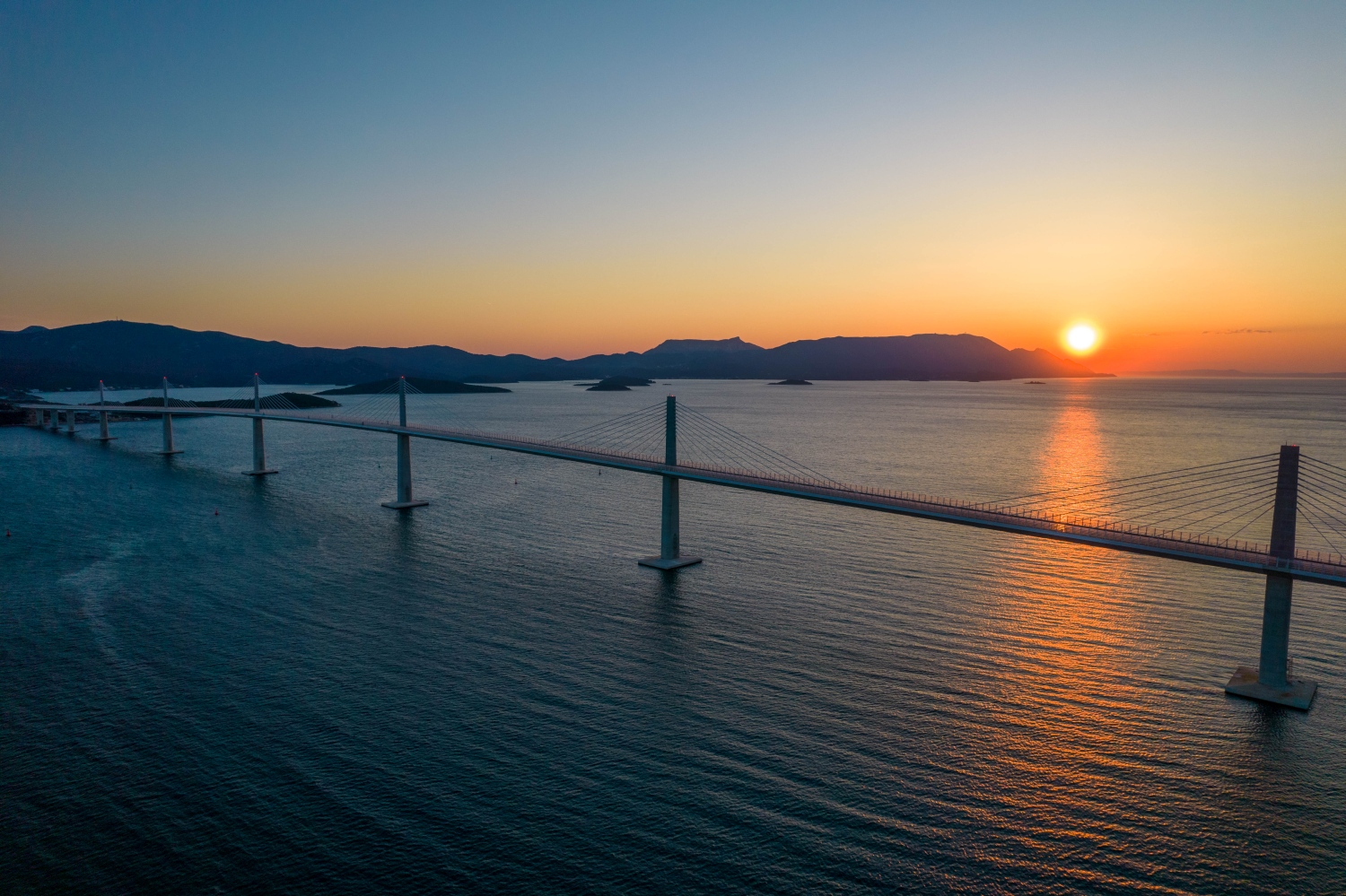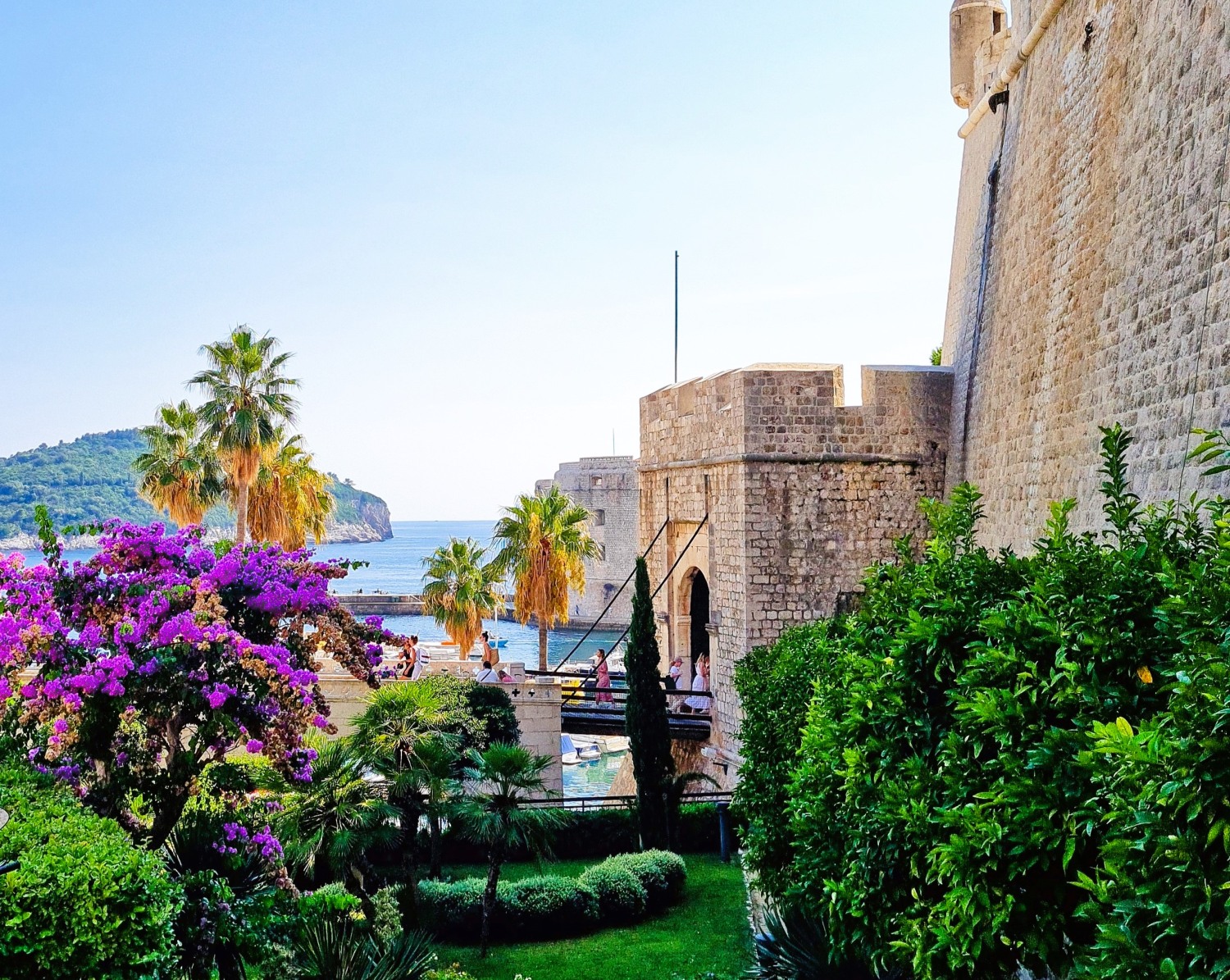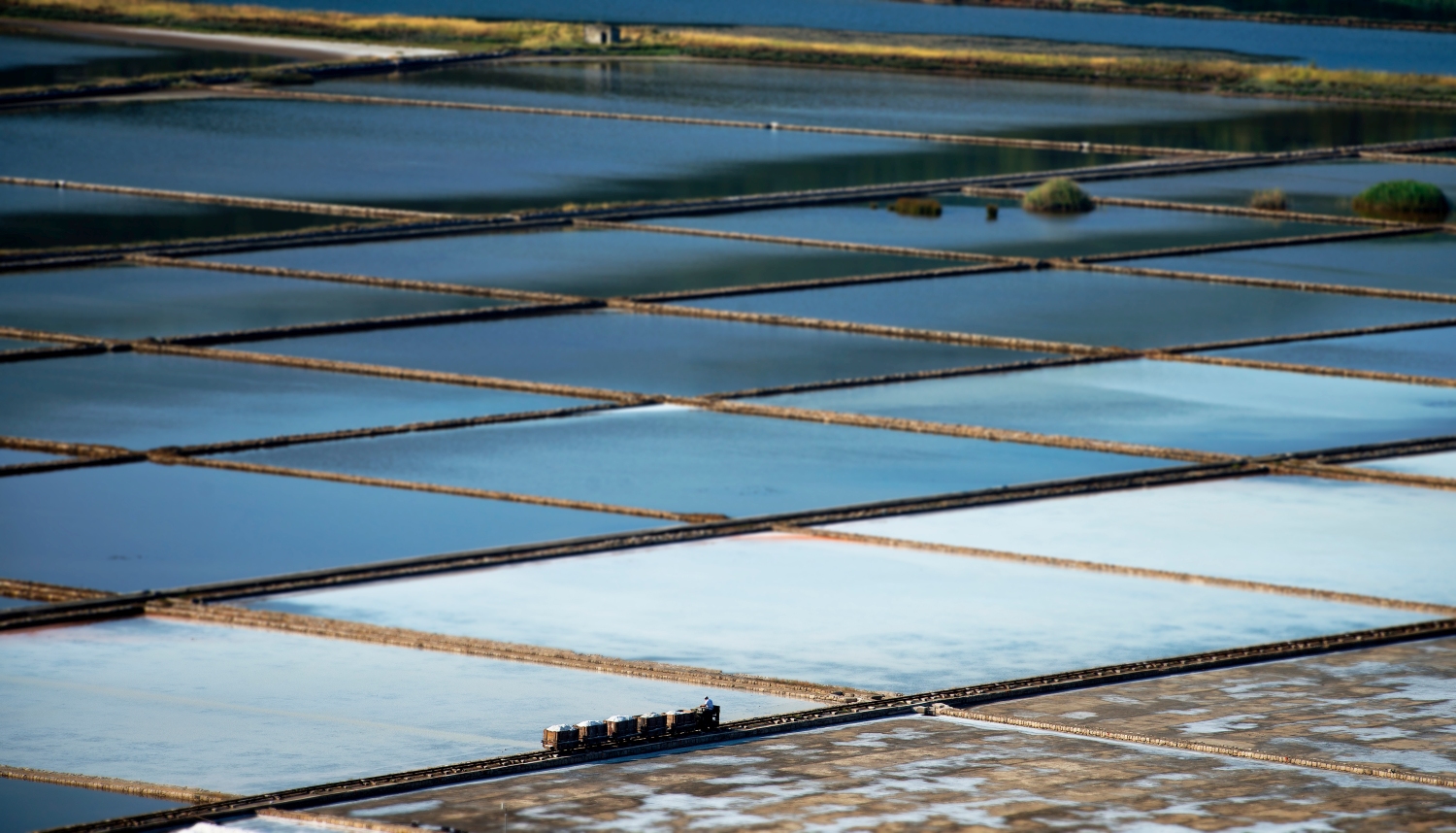Sponsored content
Croatia has soared in popularity as a travel destination and the Dubrovnik and Neretva County region is the epitome of all that's wonderful about this country, thanks to its Mediterranean location, cultural heritage, mild climate, stunning Adriatic coast scenery and fabulous cuisine.
From the islands draped along the coastline like a string of pearls to Dubrovnik itself - the gem at the heart of this region - the must-see sights will dazzle travellers looking to get under the skin of this welcoming country.
The cultural wealth in Dubrovnik and Neretva County is immense. Of architectural heritage alone, there are some 168 protected historical cities and settlements. Dubrovnik is a unique medieval city surrounded by ancient city walls and recognised by UNESCO as a World Heritage Site in 1978. There are 1,436 protected historical buildings, churches, monasteries and other sacred buildings and complexes, old fortifications and city walls, archaeological finds, old bridges and summer residences.
Beyond Dubrovnik, there are other beautiful settlements to visit, such as medieval Cavtat, historic Ston and the town of Korčula, one of the best preserved island medieval towns on the Mediterranean, and reputed birthplace of the legendary explorer Marco Polo.

Where is the Dubrovnik and Neretva County region?
Dubrovnik and Neretva County is Croatia's southernmost region, and consists of two main parts: the southern area, a long, thin length of coastline running between the borders of Montenegro and Bosnia and Herzegovina, including the city of Dubrovnik and surrounding areas, and the northern half, containing the Neretva Delta and more mountainous inland landscapes. The countryside is mainly agricultural and scenically stunning, with a backdrop of mountains descending steeply towards the coast before the terrain flattens out as it nears the sea.
This region embraces not only these mainland areas, but also several beautiful islands such as of Mljet and Korčula and the Pelješac peninsula - virtually an island itself as it's joined to the coast by a slim strip of land.
At the heart of the county is the city of Dubrovnik, a city with a long and tumultuous history, which has been fought over by countless empires and countries throughout the centuries, and, more recently, doubled as the fictional King's Landing in the TV series Games of Thrones.
Why take a holiday in Dubrovnik and Neretva County?
The culture is fascinating and the city views are some of the best in the world. It's a feast for foodies with everything from robust meat dishes to fresh seafood and enticing pastries. And it's a centre for exciting activities such as sailing, kitesurfing, diving or kayaking. Island hopping is one of the best ways to experience the many attractions of the area - spend a few days soaking up the historic sights and culture of Dubrovnik then cruise the islands to discover the charms of Korčula island, trek the Mljet National Park hiking trails and explore the Pelješac hiking routes .

The historic city of Dubrovnik: Pearl of the Adriatic
There are many beautiful places in the world, but anywhere calling itself the Pearl of the Adriatic has got to be taken seriously. The city is indeed historic, but it’s also compact enough to be explored without getting lost.
A walking tour of Dubrovnik is a must - and of the countless variations on offer, a Games of Thrones-themed tour is the most popular. Perfect for fans of the hit TV series, a GoT itinerary takes in many of the city’s most important and scenic filming locations.
The main part of Dubrovnik is easy to walk around. The narrow streets are filled with restaurants and small shops, perfect for pit stops on a leisurely stroll around the sights. A stroll along the Stradun, the main thoroughfare, the Franciscan Monastery, the Rector's Palace and Church of St Blaise, and a visit to Onofrio's Fountain should definitely be on your list, along with the Pile Gate, and other historic sites, as well as an excursion out to Lokrum Island, a green oasis just opposite the city. However, if you visit only one thing when sightseeing here, make it the city walls!
Hike or ride the cable car up to the summit of Mount Srd for a panoramic view of the red-roofed city or for a real bird's eye view take a sunset zipline ride high above the city.

Unique food and drink
In the numerous restaurants and taverns in the Neretva Valley, you will find eel and frog stew, delicious game and wild duck (liska). In Ston, you will find fresh oysters, mussels and freshly prepared fish. On the island of Korčula, local specialties worth seeking out are traditional beef stew pašticada with homemade gnocchi, seafood risotto and a traditional fish stew brodet, to name a few.
Many mouth-watering delicacies are seasoned with local olive oil whose top quality has been given protected designation of origin and protected geographical indication at the EU level since 2016. Croatian olive oil is a true delicacy and olive oil tasting rooms are a must-visit here. On the islands of Mljet, Šipan, Lopud and Koločep, enjoy dishes made from dried fish or seafood, while the restaurants of Župa Dubrovnik and Konavle offer prosciutto, cheese in oil, zelena menestra (meat and cabbage stew) and other delicacies.
Dubrovnik is ideal for anyone with a sweet tooth. With origins in nearby Ston on the Pelješac peninsula, stonska torta is made from makaruli (macaroni), walnuts and chocolate. And your journey through Dubrovnik's cuisine isn't finished until you've sampled rožata, a custard pudding drizzled in caramel and laced with homemade rose liqueur (made using a secret ingredient.)
Six must-see cultural highlights

Dubrovnik's City Walls
Iconic and picturesque, the City Walls are the cultural highlight of an exploration of the city. It's almost impossible to visit Dubrovnik without taking a walking tour of Dubrovnik Old Town to see highlights, such as the Rector’s Palace and Stradun, and the various locations from the TV series Game of Thrones - a modern cultural phenomenon - but a guided walk along the 12th-century city walls to learn their history and enjoy the ever-changing panoramic rooftop and Adriatic views tops the lot.
Originally constructed in the 10th century, although fortified considerably in 1453, they are 3 metres thick along the sea wall, and 6 metres thick inland.

Lokrum Island
This vivid green islet sitting off the coast of Dubrovnik is one of the most attractive excursion sights for visitors to Dubrovnik. With its pretty bays, views back towards the city, lush vegetation, and with its old Benedictine monastery, Lokrum leaves an unforgettable impression.
The former Benedictine monastery, dating from the 12th century, was closed down during Napoleon’s occupation and today is the centre of a protected nature park. During the French occupation, the French erected a citadel called 'Fort Royal' at the highest point on the island, which offers the loveliest view of Lokrum and the whole of Dubrovnik.
A special attraction on Lokrum is its small lake, called the 'dead sea'. The castle today is home to the Biological Institute of the Croatian Academy of Arts and Sciences and the Natural Sciences Museum, and contains several valuable collections.

Cavtat old town
Something of a hidden gem, even among hidden gems, Cavtat is located on a stunning bay about 20km south of Dubrovnik and oozes history from every brick and red slate roof. The site of the ancient city of Epidaurus, it was once an important Roman colony and has also been a centre of the Dubrovnik Republic.
It's an easy place to stroll around and visit historical sites such as the Rector’s Palace - a Renaissance structure dating from 1555-1558. This is home to the Bogošić library, archive, museum and stone monument collection (including two inscriptions by the Roman Governor Dolabelle from the 1st century) and a graphical collection with over 10,000 pages compiled by Bogišić. The Baroque Church of St. Nicholas, dating from 1732, contains eight paintings of the old masters and paintings by Vlaho Bukovac in its vault. The Church of Our Lady of Snow and the Franciscan monastery with its Renaissance cloister date back to 1483.
Coming with bags of atmosphere, this pretty village which sloping gently up from the promenade, has delightful narrow streets full of attractive village houses.
Immerse yourself in the local culture and heritage in Čilipi
The largest town in the beautiful Konavle area, Čilipi is the place to be to really get a taste of the unique traditions and culture of the Dubrovnik and Neretva County region. Every Sunday from Easter until the end of October, the historic town square plays host to numerous folk events.
You can catch several Croatian folk dance performances and listen to traditional Dalmatian songs, admire the beautiful and intricately embroidered costumes, browse stalls full of local crafts and try the local food and drink. Prošek, a sweet traditional wine, and Travarica brandy should be top of your list!

Korčula
With its natural beauty and rich cultural heritage, the island of Korčula will add massively to your Croatian memory bank. The island has been inhabited since prehistoric times, while Illyrian, Greek, and Roman civilisations have left their mark on its history of the island as evidenced by numerous findings from Vela Spila and Kopila, the most notable archaeological sites on the island today, the remains of the walls of the Illyrian fort Gradina in Smokvica as well as Lumbarda Psephisma from the 3rd century BC as the oldest stone inscription from this part of Europe.
Korčula town is fascinating to explore - the layout of the streets and squares is designed in the form of a herringbone to provide safety and comfort to its original residents. Within the walls of the Old Town, which is pretty much an open-air museum, visit the Cathedral of St Mark, the Abbey Treasury, the Town Museum, the Marco Polo Interpretation Centre, and the various churches and galleries.

Ston
For an unforgettable experience of a town with a rich historical and cultural tradition and hospitable local population, you can't beat Ston, a medieval town on the Pelješac peninsula. Ston's history dates as far back as the Dubrovnik Republic, and is rich with historical and cultural tradition. It's also known as the city of salt and still has one of the oldest active saltworks in the world.
Nearby is a little, magical place, Mali Ston, which is connected to Ston by the longest preserved stone wall in Europe (5.5 km). The Bay of Mali Ston, known for its shellfish, especially oysters and mussels, is a must-visit destination for true lovers of seafood delicacies. A boat ride to the oyster farms and tasting of this natural aphrodisiac straight from the sea, paired with a glass of fine wine from Pelješac, are just the ticket! Ston also hosts an annual marathon race (and shorter events) along the stone wall (and around the bay area) in September.
For more information about visiting this fantastic area, go to visitdubrovnik.hr












